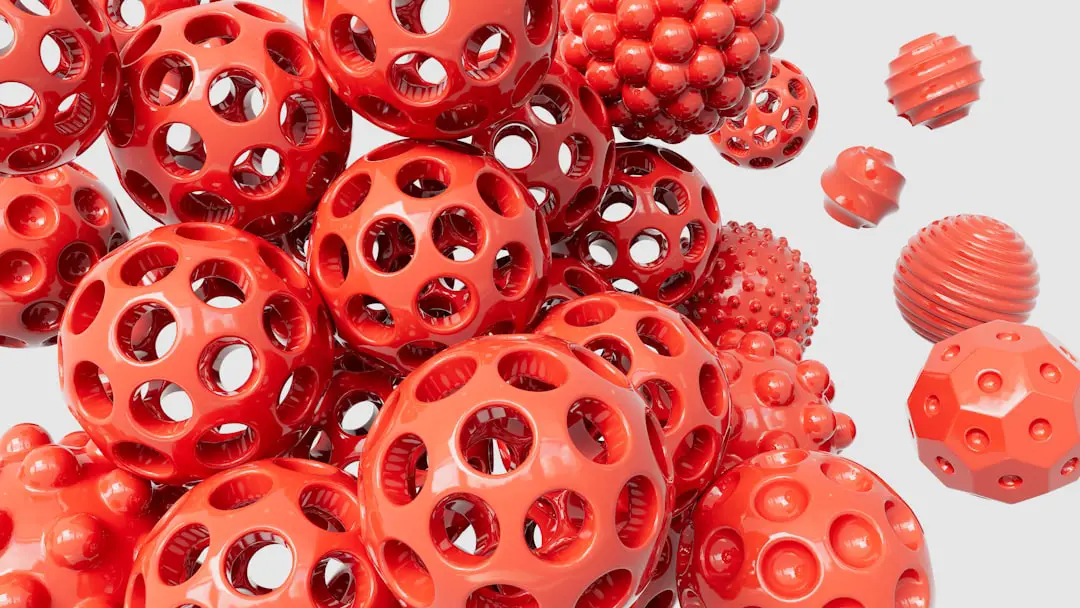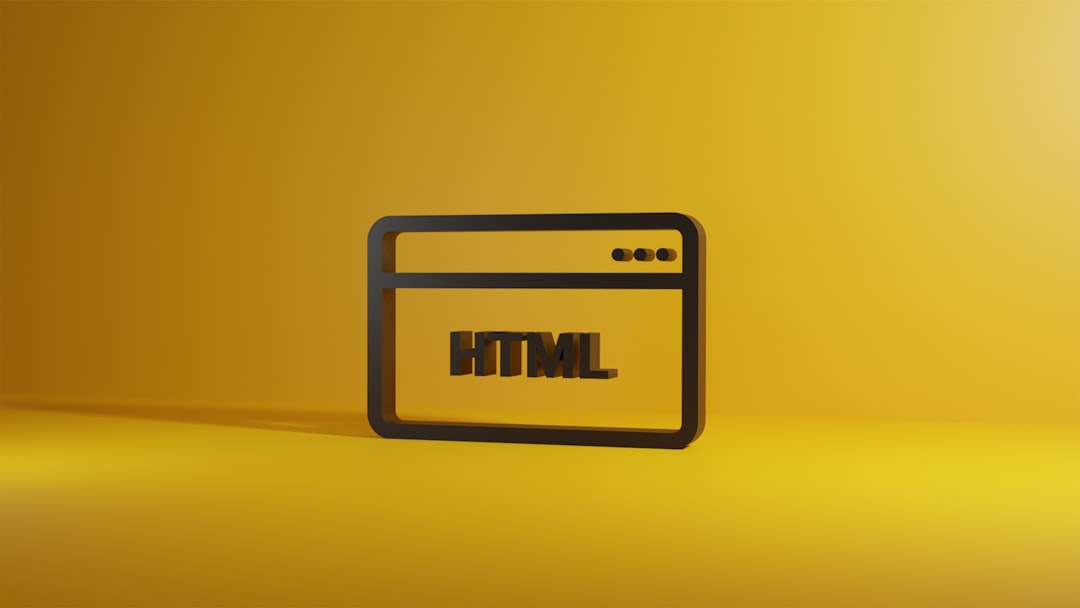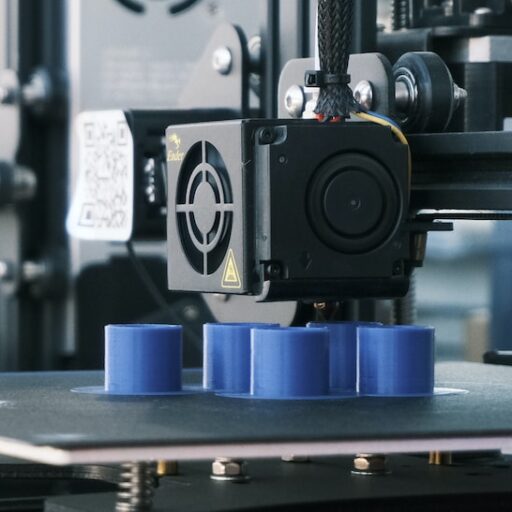Support our educational content for free when you purchase through links on our site. Learn more
How Much Do You Charge Per Hour for 3D Printing? 💰 7 Key Factors to Consider [2025]
Are you venturing into the world of 3D printing and wondering how to set your hourly rates? You’re not alone! Many enthusiasts and professionals alike grapple with this question. The truth is, pricing for 3D printing services can be as intricate as the designs you create. Did you know that the average hourly rate can range from just $1 to over $50? This wide variance depends on several factors, including material choice, printer type, and the complexity of your projects.
In this article, we’ll break down everything you need to know about charging for 3D printing, including the key components that influence your pricing strategy. Whether you’re a hobbyist looking to monetize your passion or a professional aiming to optimize your service rates, we’ve got you covered!
Key Takeaways
- Understand the Cost Factors: Pricing varies based on printer type, materials, and labor.
- Hourly Rates: Expect to charge anywhere from $1 to $50+ per hour depending on your expertise and project complexity.
- Use Cost Calculators: Tools like the Prusa Cost Calculator can help you estimate costs accurately.
- Material Matters: The choice of filament or resin significantly impacts your pricing.
- Stay Competitive: Research what others are charging for similar services to ensure your rates are attractive.
Ready to dive deeper into the world of 3D printing pricing? Let’s explore the ins and outs of setting your rates effectively!
Table of Contents
Quick Tips and Facts
Understanding 3D Printing Costs: A Deep Dive
Is 3D Printing Worth the Investment?
Factors That Influence 3D Printing Pricing
How Much Can You Expect to Pay for 3D Printing Per Hour?
The Role of Material Selection in 3D Printing Costs
Exploring 3D Printing Cost Calculators: Your Best Friends
Which 3D Printers Offer the Best Value for Your Money?
Real-Life Examples: What People Charge for 3D Printing Services
Common Mistakes to Avoid When Pricing 3D Printing Services
Conclusion
Recommended Links
FAQs about 3D Printing Pricing
Reference Links
Quick Tips and Facts
- Understand the Cost Factors: The price for 3D printing services can vary widely based on printer type, material, and labor costs. Familiarize yourself with the key components that influence pricing.
- Hourly Rates: Expect to charge anywhere from $1 to $50 per hour depending on your skill level and the complexity of the project.
- Use Cost Calculators: Tools like the Prusa 3D Printing Cost Calculator can help you estimate costs accurately.
- Material Matters: The type of filament you use (e.g., PLA vs. specialty materials) can significantly impact your costs.
- Don’t Forget Post-Processing: Time spent on tasks like sanding or painting should be factored into your pricing.
- Stay Competitive: Research what others are charging for similar services to ensure your rates are competitive.
Understanding 3D Printing Costs: A Deep Dive
When it comes to 3D printing, understanding the costs involved is crucial for both hobbyists and professionals. The price you charge per hour can depend on a multitude of factors, including the type of printer, materials used, and the complexity of the project.
Key Cost Components
| Cost Factor | Description |
|---|---|
| Printer Cost | Initial investment in the printer, which can range from hundreds to thousands. |
| Material Cost | Filament or resin costs, which can vary significantly based on type. |
| Electricity | Power consumption during printing, typically measured in kWh. |
| Labor | Your time spent on design, printing, and post-processing. |
| Maintenance | Regular upkeep costs for the printer. |
| 3D Model Cost | Costs associated with purchasing or designing models. |
| Post-Processing | Additional time for finishing touches like sanding or painting. |
Is 3D Printing Worth the Investment? 🤔
Absolutely! But it depends on your goals. If you’re a hobbyist looking to create unique items, the investment can be justified. For businesses, 3D printing can reduce costs in prototyping and production.
Pros and Cons
| Pros | Cons |
|---|---|
| Customization and flexibility | Initial setup costs can be high |
| Rapid prototyping | Learning curve for software and design |
| Potential for profit in services | Ongoing material and maintenance costs |
Factors That Influence 3D Printing Pricing
Understanding the factors that influence pricing is essential for setting competitive rates. Here’s a closer look:
1. Material Selection
Different materials come with different price tags. For instance, basic PLA might cost less than specialty filaments like Nylon or Carbon Fiber.
2. Printer Type
- Desktop Printers: Generally more affordable but may have limitations in size and material compatibility.
- Industrial Printers: Higher initial costs but offer better quality and speed.
3. Print Complexity
Intricate designs require more time and resources, which should be reflected in your pricing.
4. Post-Processing Needs
If your prints require significant finishing work, this should be factored into your hourly rate.
How Much Can You Expect to Pay for 3D Printing Per Hour? ⏰
The hourly rate for 3D printing can vary widely. Here’s a breakdown based on different scenarios:
Typical Hourly Rates
| Scenario | Estimated Rate |
|---|---|
| Hobbyist (basic prints) | $1 – $5 per hour |
| Freelance Designer | $10 – $30 per hour |
| Professional Services | $30 – $50+ per hour |
Example Calculation
Using a formula from AnkerMake, you can calculate costs as follows:
- Electricity Cost: (Printer Power Consumption in kW) x (Printing Hours) x (Electricity Rate per kWh)
- Material Cost: (Material Price per Unit) x (Material Consumption per Hour)
The Role of Material Selection in 3D Printing Costs
Choosing the right material is pivotal in determining your overall costs. Here’s a quick comparison of common materials:
| Material | Cost Range | Properties |
|---|---|---|
| PLA | $20 – $30/kg | Easy to print, biodegradable |
| ABS | $20 – $30/kg | Durable, heat-resistant |
| PETG | $25 – $35/kg | Strong, flexible, good for outdoor use |
| Specialty | $100+/kg | Unique properties (e.g., carbon fiber) |
Exploring 3D Printing Cost Calculators: Your Best Friends 🛠️
Using a 3D printing cost calculator can save you time and ensure accuracy. Here are a few popular options:
- Prusa’s Cost Calculator: User-friendly and includes maintenance and labor costs.
- CalcPro™: Automates pricing based on input values, eliminating manual calculations.
- MakerShop: Generates quotes based on STL files, calculating print time and filament usage.
Which 3D Printers Offer the Best Value for Your Money? 💰
When considering a 3D printer, it’s essential to evaluate cost-effectiveness. Here are some printers that offer great value:
| Printer Model | Key Features | Ideal For |
|---|---|---|
| AnkerMake M5 | Affordable, adjustable speeds, intelligent bed | Beginners and hobbyists |
| Creality Ender 3 | Budget-friendly, large community support | DIY enthusiasts |
| Prusa i3 MK3S | High-quality prints, reliable, versatile | Professionals and serious hobbyists |
Real-Life Examples: What People Charge for 3D Printing Services
Let’s take a look at some real-life scenarios to understand how much people are charging for 3D printing services:
- Local Makerspaces: Often charge $1 to $3 per hour for basic printing services.
- Freelance Designers: May charge $20 to $50 per hour, especially for custom designs.
- Online Services: Platforms like Shapeways offer pricing based on complexity and material.
Common Mistakes to Avoid When Pricing 3D Printing Services ❌
- Underestimating Time: Always account for design, print, and post-processing time.
- Ignoring Material Costs: Ensure you factor in the cost of filament or resin accurately.
- Neglecting Maintenance: Regular upkeep costs should be included in your pricing model.
Conclusion

Understanding how to charge for 3D printing services can be a game-changer, whether you’re a hobbyist or a professional. By considering all the factors involved—from material costs to labor—you can set competitive rates that reflect the quality of your work. Remember to stay updated with market trends and use tools like cost calculators to streamline your pricing process.
Recommended Links
- How much does 3D printing cost?
- 3D Printable Objects
- 3D Printing Innovations
- 3D Design Software
- 3D Printing in Education
FAQs about 3D Printing Pricing

Q: What’s the average cost of 3D printing per hour?
A: It can range from $1 to $50 depending on various factors.
Q: How do I calculate my printing costs?
A: Use a formula that includes material costs, electricity, and labor.
Q: Are there free tools to help with pricing?
A: Yes, tools like the Prusa Cost Calculator can help.
Reference Links
Conclusion

In wrapping up our exploration of how much to charge per hour for 3D printing, it’s clear that pricing is a nuanced topic influenced by various factors. From the type of printer and materials used to the complexity of the project, each element plays a crucial role in determining your rates.
Summary of Key Points
- Pros: 3D printing offers customization, rapid prototyping, and the potential for profit.
- Cons: Initial costs can be high, and there’s a learning curve involved in mastering the technology.
If you’re considering entering the world of 3D printing services, we confidently recommend utilizing cost calculators like the Prusa Cost Calculator to streamline your pricing process. This tool can help you navigate the complexities of material costs, electricity, and labor, ensuring you set competitive yet profitable rates.
Remember, staying informed about market trends and continuously refining your pricing strategy will keep you ahead of the game. So, whether you’re a hobbyist or a professional, embrace the journey of 3D printing with confidence! 🚀
Recommended Links
- 👉 Shop Prusa 3D Printers on: Prusa Official Website
- Explore AnkerMake Products on: AnkerMake Official Website
- Browse Creality Printers on: Creality Official Website
- Find 3D Printing Books on Amazon: 3D Printing Books
FAQs about 3D Printing Pricing

What factors affect the hourly rate for 3D printing services?
Understanding the Influences on Pricing
Several factors can influence the hourly rate for 3D printing services:
- Skill Level: More experienced operators can charge higher rates due to their expertise.
- Complexity of the Print: Intricate designs may require more time and resources, leading to higher charges.
- Material Costs: The type of filament or resin used can significantly impact the overall cost.
- Market Demand: Rates can fluctuate based on the demand for 3D printing services in your area.
Read more about “How Much Does a 3D Printing Business Make in 2024?”
Is it cheaper to buy a 3D printer or pay for 3D printing services per hour?
Weighing the Costs
Buying a 3D printer can be more cost-effective in the long run, especially for frequent users. However, if you only need occasional prints, paying for services may be more economical. Consider your printing needs, frequency, and the initial investment required for a printer versus service rates.
How do different 3D printing technologies (FDM, SLA, SLS) impact the cost per hour?
Technology Matters
- FDM (Fused Deposition Modeling): Generally cheaper due to lower material costs and faster print times.
- SLA (Stereolithography): Higher material costs and longer curing times can increase hourly rates.
- SLS (Selective Laser Sintering): Typically the most expensive due to the cost of materials and the complexity of the process.
What is the average cost per hour for 3D printing with different materials like PLA, ABS, or resin?
Material Breakdown
- PLA: Typically ranges from $1 to $5 per hour, depending on the complexity.
- ABS: Similar to PLA, but may be slightly higher due to its properties and handling.
- Resin: Can range from $5 to $15 per hour, reflecting the higher material costs and post-processing needs.
Do 3D printing services offer discounts for large or long-term projects?
Bulk Pricing Insights
Yes, many 3D printing services offer discounts for bulk orders or long-term projects. This is often due to the reduced setup time and material costs associated with larger jobs. Always inquire about potential discounts when discussing your project with service providers.




